Building Plans
The building will provide critical space for nursing and pharmacy faculty and students to collaborate, conduct research and develop impactful strategies to address critical public health issues such as substance use, mental health, jail recidivism and health equity.
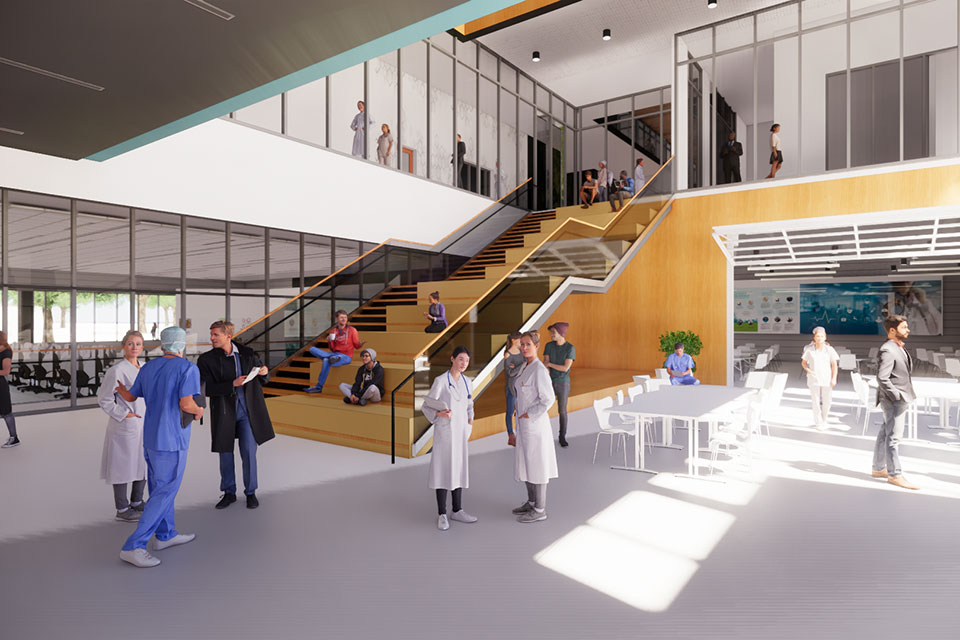
First Floor
The majority of the large classrooms occupy the first floor, where there is a necessary adjacency to the pre-function space, retail café, building commons and student collaboration areas. This will provide touchdown and queuing spaces during class changes and flexibility for classrooms to spill out into the corridors during large events. There is a monumental staircase that includes standard tread heights as well as seated height ledges that make this a collaborative hub as well as one of the main routes to navigate the building. Ascending the staircase from the first floor to the second provides glimpses into the unique program spaces. The staircase is strategically located close to building entries to be visible from the exterior, promoting movement, fitness and wellness — aspects central to the core mission of the programs within the building and in support of WELL Building Standards.
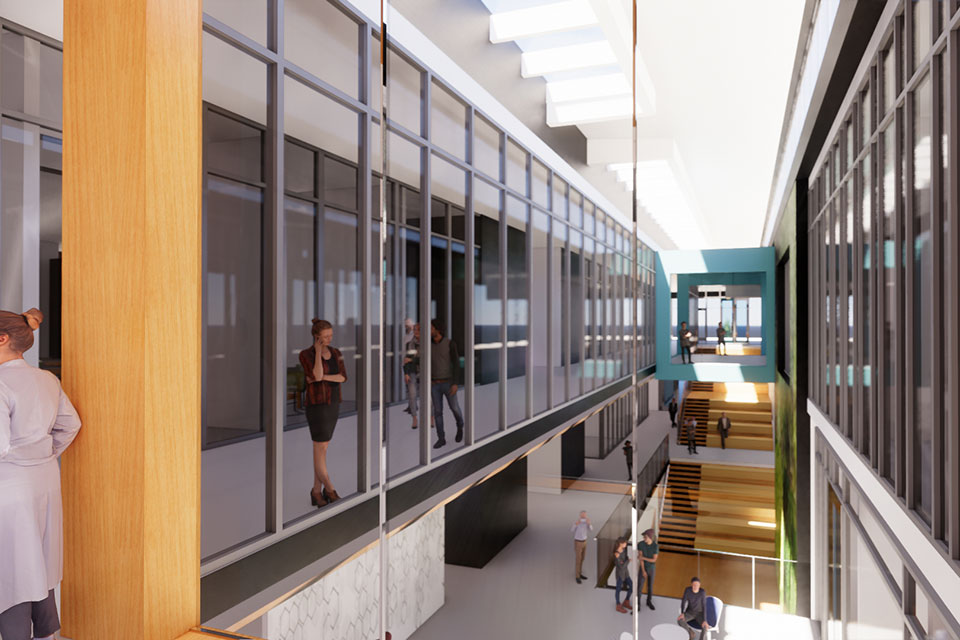
Second Floor
The Center for Nursing Education and Simulation (CNES) suite and the Pharmacy Practice Lab suite occupy the majority of the second floor. The front of each suite faces the main corridor to showcase the identity of both the School of Nursing and the College of Pharmacy. The labs will balance visibility with privacy, function and acoustics. The two suites each have a main entry as well as a “back of house” connection that allows for shared resources for clinical faculty, ease of interprofessional education between nursing and pharmacy students in simulation, and a shared virtual reality/augmented reality space. Briefing rooms can be used after hours as student study space, and the Objective Structured Clinical Exam rooms can be accessed after hours to host research subject groups or offer additional study space. An academic office suite is also located on this floor so faculty who teach in the clinical learning labs can be in close proximity to students.
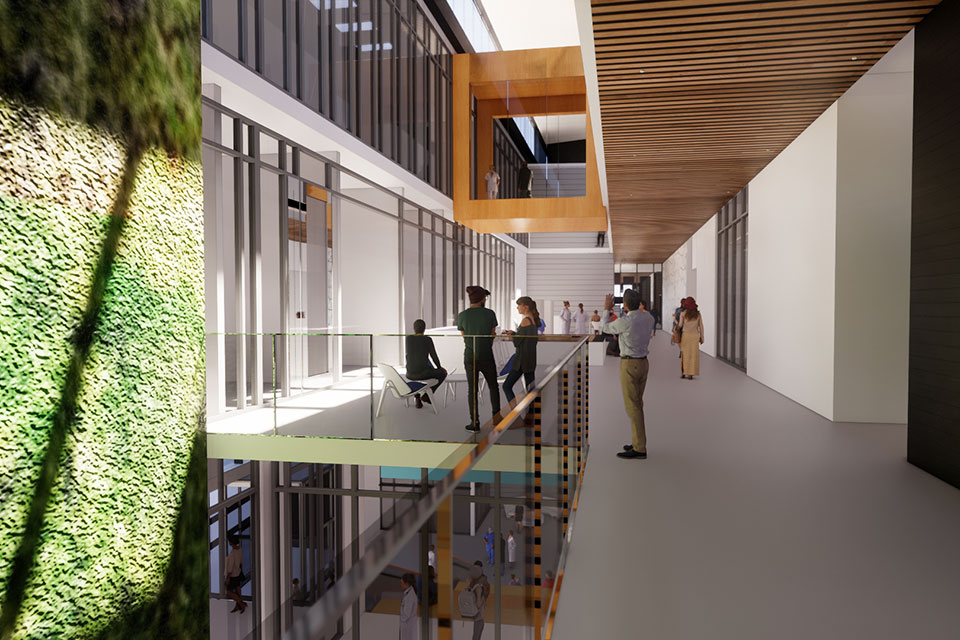
Third Floor
The third floor includes two flexible CNES skills labs, the nuclear pharmacy lab and two small classrooms. There is a critical adjacency between the nuclear pharmacy lab and a small classroom that will be scheduled at the same time to meet the nuclear lab exposure safety requirements. Each nursing skills lab includes an instructional area that can be closed off and used independently or can be opened up as an extension of the traditional skills area. There are ten skills bays on each side of the lab with shared equipment storage and a faculty touchdown area. There are also student collaboration space and larger faculty suites on this floor.
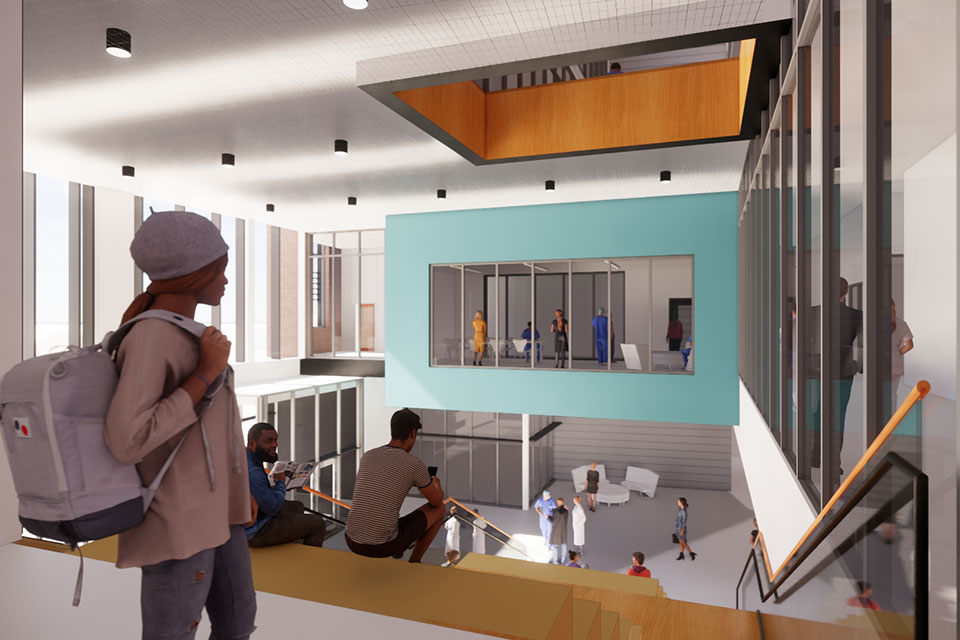
Fourth Floor
The monumental staircase path ends at the fourth floor, facing an exterior terrace that offers views of north campus. There is graduate student office space and student collaboration space on this floor that look down to the floors below. The College of Pharmacy deans’ suite, the School of Nursing head’s suite and the graduate student workstations occupy the remainder of this floor.
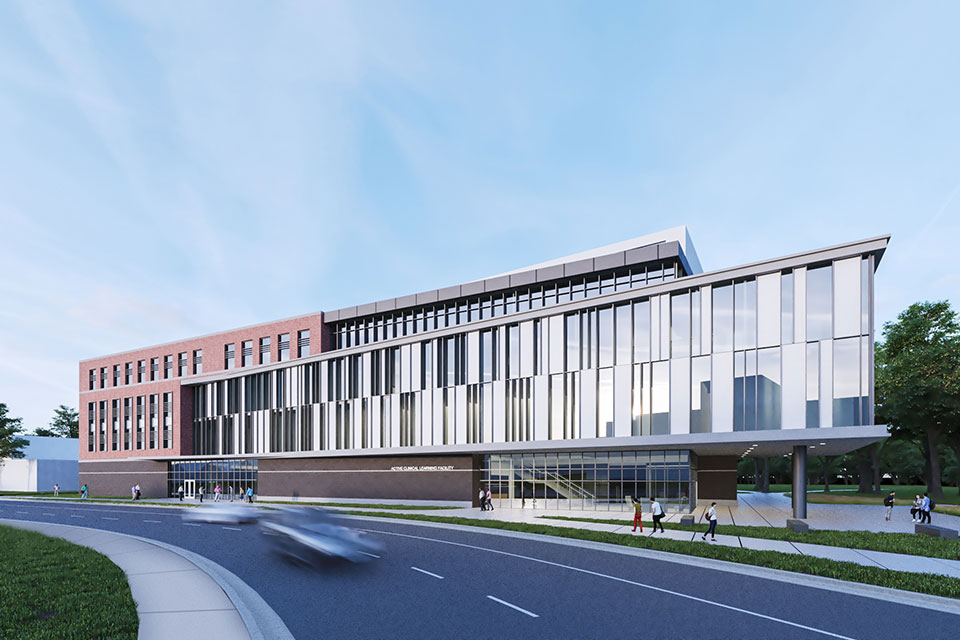
Basement
The basement level of the building houses the mechanical room that serves the building as well as additional research space and offices. The building is designed to allow tunnel connections to future research buildings as well. The basement level provides modern research space that establishes the start of a new research district and allows the university to consolidate and replace aging facilities on campus.